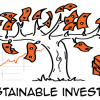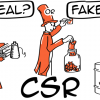Hi folks, Alex here. Climate change is like gravity. It doesn’t care wether we believe in it or not. I thought I knew a lot about climate change and, you know, that solutions are mostly about electric cars, windmills and solar panels, right?! Until I read Project Drawdown… So in this video today, we’ll have a quick recap on what is climate change, what causes it, and then we’ll go through the top 10 most impactful solutions available today. Feel free to jump to the solutions time code if you like. Ok, let’s get drawing.
Definition
Climate change usually refers more specifically to anthropogenic climate change, meaning the rapid rate at which the temperature of our planet and its atmosphere have been increasing over the past century due to human activity, in particular since the industrial revolution. It is NOT about individual weather events, although climate change can result in large-scale shifts in weather patterns.
Causes
Some gases present in our atmosphere make it work like a greenhouse so we call them greenhouse gases (GHG): The higher their concentration, the more they trap heat. This is great for starting your tomatoes during a chilly spring but this is not good for human beings on this planet. These greenhouse gases include the well known carbon dioxide of course but also methane, nitrous oxide, ozone, chlorofluorocarbons (CFCs, HFCs), etc. Since the industrial revolution, we have been burning a lot of fossil fuels (such as oil, coal and natural gas), therefore our human activities have contributed to a 45% increase in the atmospheric concentration of carbon dioxide, from 280 ppm in 1750 to 415 ppm in 2019. But there is a correlation between CO2 concentration and temperatures (as we found out in my video about ice cores in Antarctica) therefore as CO2 emissions increase so does the global average temperature on Earth.
Ok, so greenhouse gases cause climate change but more precisely, which sectors are these emissions coming from? The Intergovernmental panel on climate change (IPCC) breaks down our carbon emissions like this. A few things are interesting here. Although GHG emissions and climate change are often pictured as cars and airplanes, you can see that it would be more accurate to draw them as fields, steaks, concrete buildings with heaters and air conditioners and factories building things as these three sectors combined represent about 76% of our global GHG emissions. Although we often talk about emissions, another issue from a climate change perspective is the reduction of carbon sinks, like deforestation which reduces CO2 absorption.
A few things make this a little more complicated. Firstly: The rise in temperature has a lot of inertia, meaning it is not going to stop overnight even if we stopped our emissions today. Secondly: Positive feedback loops: smaller white surfaces on the planet reflect less the rays of the sun resulting in more heat absorption. Also, the hotter it gets, the more air conditioning we use. We saw this is already a major challenge but it is also an opportunity as we’ll see in a minute. Thirdly: the permafrost conceals huge amounts of methane which would act like a climate bomb if liberated.
The implications for us humans are numerous: more catastrophes such as forest fires, hurricanes, tsunamis, draughts, viruses like Covid-19 and sea level rise resulting in refugee crisis, conflicts, loss of crops and biodiversity, diseases and economic downfall. In a 2016 report, the IPCC strongly suggested keeping the global warming under 1.5°C above pre-industrial levels to avoid dramatic outcomes. Even it it does not look like much, 1.5° makes a big difference on planet Earth!
I know this can sound scary and it is, I keep wondering which kind of world my son is going to live in but the good news is that we know the solutions to fix it, so this is half the job done, right?
Project Drawdown did some extensive research, crunched the numbers for us and put together a list of the most impactful solutions to mitigate climate change. You are already familiar with some of them so we’ll go quickly. 25% of our GHG emissions come from producing electricity so wind turbines and photovoltaic (instead of oil and coal) are a great opportunity for reduction: up 117 gigatons between 2020 and 2050. Restoring forests (tropical and temperate) and degraded land would increase our carbon sink and therefore reduce GHG by another 96 gigatons.
Two other solutions in the top ten involve refrigerants. Replacing fluorinated refrigerants such as HFC by alternatives such as ammonia, carbone dioxide or propane could reduce emissions by 43 to 50 gigatons. Containing the refrigerants that are likely to be released could avoid another 57 gigatons of CO2 eq.
The second most impactful solution is family planing and educating girls. These two intertwined solutions could reduce emissions by a total 85 Gigatons: Family planning refers to contraception and health. Educated girls through secondary school have fewer children. The population difference impacts all sectors: energy, building, food, waste, transportation, etc.
Finally, the number one opportunity is on food. In fact, two of the top three solutions suggested by Project Drawdown are food related: food waste and plant rich diets to reduce emissions by respectively 87 and 65 Gigatons. This is more than 10% of our global emissions right here! We use a lot of land, water, energy and labour to produce food but a third of it is not eaten. This is a waste that can be prevented by improving storage and transportation in low income countries. In high income countries, policies and legislation can avoid food waste at the retail and consumer level. If 50 to 75% of the world’s population adopted a healthy diet at around 2,250 calories per day with less meat, it would cut emissions by 43 Gigatons and avoided deforestation would add another 22. This would also save 1 trillion dollars in health care and lost productivity. Yes, this is 1000 billion dollars over 30 years that we can use for other solutions we talk about previously!
Depending on the scenario and exact calculation, these combined options would reduce our emissions by over 30%. And these don’t involve fancy or freaky new technologies like geoengineering but mostly implementing more broadly solutions that are already available.
Emissions of greenhouse gases are like smoking, the best time to stop is today. And there are two things all of us can do every day to help: talk about it and support the ones who are part of of the solution.
If you enjoyed this video, please like it, subscribe and share it with 1, 2 or 5 people. It takes me a few days to produce a video like this one so people who support me on Patreon help me out a lot. If you would like to become a patron as well you can choose the amount and you can stop anytime. Thank you to all our patrons and thank you for watching.






